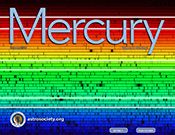Summer 2018 - Volume 47, Number 3

Table of Contents
[7] Astronomy in the News, Ian O'Neill
A rundown of some of the most exciting developments in space and time.
[31] Opportunity Sleeps, Tracy Staedter
As an unprecedented dust storm blankets the Martian atmosphere in darkness, the 14-year-old rover goes silent.
[35] Billions of Black Holes, Matthew R. Francis
Many undiscovered black holes likely lurk throughout the Milky Way – this is how we might find some of them.
[35] Chasing Shadows, Steve Murray
Two teams of scientists studied the 2017 solar eclipse from high-flying aircraft. A year later, results are starting to come out.
Departments
[3] Perspectives, Ian O'Neill
Another Painful Silence
[4] First Word, Linda Shore
An Astronomer in Paris
[6] ASP News
Girl Scout Badges
[12] Annals of Astronomy, Clifford J. Cunningham
A Brief History of Pondering Cosmic Origins
[14] Research Focus, M. Katy Rodriguez Wimberly
How Gaia Reaches Beyond Our Galaxy
[16] Research Focus, Adrianna Brown
The Curious Case of Dusty Star-Forming Galaxies
[20] Astronomer’s Notebook, Jennifer Birriel
When Pulsars Skip a Beat
[22] Armchair Astrophysics, Christopher Wanjek
X-ray Factor: Is Alpha Centarui a Winner for Life?
[24] Education Matters, Brian Kruse
The Mars Hoax: A Teaching Opportunity
[26] A Little Learning, C. Renee James
Live and Learn
[29] Cosmic Views, Jason Major
A Brief Burst of Solar Activity, and The Illusion of Ina
Astronomy in the News
By Ian O'Neill
A Black Hole Tribute for Stephen Hawking
On June 15, Professor Stephen Hawking’s ashes were interred at Westminster Abbey, London, at a service that featured moving tributes by family, friends and colleagues, including physics heavyweight Prof. Kip Thorne and actor Benedict Cumberbatch, who played Hawking in the 2004 BBC film about the physicist’s early years as a PhD student at Cambridge University.
Opportunity Sleeps
By Tracy Staedter
This is either an obituary or a story of survival. As of July 2018, NASA’s Mars rover Opportunity is parked halfway down the slope of the aptly-named Perseverance Valley, a channel that cuts into the equatorial crater, Endeavour. The rover sleeps, its instrument-tipped robotic arm still deployed on the rock, La Joya, where it had been the last Wednesday of May. That’s when a small dust storm bloomed about 1,000 kilometers (620 miles) north of “Oppy.” The storm grew quickly and has since engulfed the entire planet in an opaque haze, blotting out the Sun—the rover’s primary source of power. There is only darkness now. And time. How long it will take the storm to subside and for the diminishing dust to reveal sunlight again is anyone’s guess. It could be weeks. It could be months.
Billions of Black Holes
By Matthew R. Francis
By their nature, black holes are difficult to detect. They don’t emit any light, and all light falling directly on them gets absorbed. They’re also very small in comparison to other objects with the same mass—even a black hole billions of times the mass of the Sun will only present a tiny profile for our telescopes to
spot.
Because black holes are invisible, astronomers think the Milky Way is probably hiding many more than we have discovered to date. In fact, based on simulations of the galaxy, that number could be anywhere from ten million to a few billion hidden black holes.
Chasing Shadows
By Steve Murray
This observation of a total solar eclipse shows the Sun’s magnetic corona, a feature that can only be seen when the glare of the Sun’s disk is blocked — in this case by the Moon. Credit: NASA
While millions of people observed the Great American Eclipse of 2017 from places all around the country, two
science teams observed the event from high above it. Researchers flew instrument-packed aircraft above 90 percent of the Earth’s atmosphere in an effort to gain new insights into the mechanisms that drive the temperature and structure of the Sun’s corona. One year later, scientists are showing what they’ve learned so far from their data, and discussing what they still expect to find.
